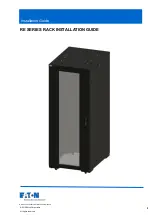
29
1072_0_Product_Manual - February 24, 2011 2:52 PM
Recovery / Upgrade System
The recovery / upgrade system is a small system from which the main system can be reset/upgraded, or recovered.
Entering the Recovery System
The recovery system can be entered in two ways.
1. From the ‘System: Backup & Restore’ web interface page.
2. By holding down the reset button for 20+ seconds - until the green light has switched from flashing slowly to
flashing quickly.
Upgrades
Generally, you should not need to do a full system upgrade. Upgrades are meant to be performed via the package
system, and Phidgets maintains it’s own package repository from which to push out updates.
Occasionally, you may wish to go back to a clean install and upgrade to the latest rootfs/kernel from Phidgets.
Phidgets will not be creating these images with every release of phidget21 as we did with PhidgetSBC1, rather they
will be released several times a year, as needed for major changes not easy to push out via packages.
You can also flash your own custom kernel or root filesystem image.
Factory Reset
This restores the kernel and root filesystem from backup, overwriting any changes that may have been made. This is
equivalent to holding down the reset button for 10 seconds.
Recovery
If the main filesystem has been damaged/misconfigured in such a way that it won’t boot, you may be able to fix the
issue / recovery important files before running a reset. The recovery system runs an SSH server that you can login
to for console access. Username/password is: root/root.
You can mount the main root filesystem with the following commands (assuming it’s not damaged):
1. ubiattach /dev/ubi_ctrl -m 6
2. mount -t ubifs /dev/ubi0_0 /mnt
















































